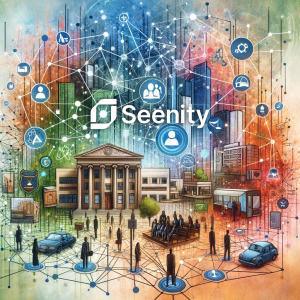The Seenity platform was inspired by Daniel Kahneman, a Nobel Prize winner in Economics. By enhancing consistency, accuracy, and profitability in decision-making and underwriting methods, the system enables the isolation of human influences.
Daniel Kahneman, is an Israeli American psychologist and economist known for his pioneering work in hedonics, the psychology of judgment and decision-making, and behavioral economics. He was awarded the 2002 Nobel Memorial Prize in Economic Sciences, along with Vernon L. Smith, for his contributions to the field. Kahneman’s research challenged the traditional economic theory’s assumption of human rationality.
Daniel Kahneman, in his book “Noise: A Flaw in Human Judgment,” explores the concept of noise, which refers to unwanted variability or randomness in decision-making. He argues that noise can lead to inconsistencies and errors in judgments, even among experts. Kahneman highlights the importance of reducing noise to improve decision-making processes and outcomes, suggesting methods such as standardizing procedures, and using algorithms to minimize subjective influences. Overall, he emphasizes the detrimental effects of noise on decision quality and advocates for strategies to mitigate its impact. That book inspired the Seenity system.
One example of noise in decision-making is in the context of medical diagnoses. Even with well-trained professionals and established diagnostic criteria, there can be significant variability in individual judgments. For instance, two doctors examining the same patient’s symptoms might arrive at different diagnoses due to subtle differences in interpretation or personal biases, leading to noise in the diagnostic process. This variability can result in inconsistent treatment recommendations and potentially harm the patient’s health outcomes.
In the context of judgment, noise refers to inconsistencies or variability in decision-making that cannot be attributed to differences in information or preferences. For example, if different judges issue significantly different sentences for similar offenses, it suggests noise in the judgment process. Kahneman’s work highlights how noise can lead to unfairness, inefficiency, and reduced trust in decision-makers. He suggests methods such as training, calibration, and decision aids to reduce noise and improve the consistency and accuracy of judgments.
Kahneman suggests several methods to reduce noise and enhance the consistency and accuracy of judgments:
– Training: Providing consistent and standardized training to decision-makers can help align their judgment processes and reduce variability.
– Calibration: Ensuring decision-makers are calibrated, meaning they have a shared understanding of criteria and standards, can help minimize individual biases and inconsistencies.
– Decision aids: Implementing decision aids such as checklists, algorithms, or decision trees can provide structure and guidance, helping decision-makers make more consistent and accurate judgments.
By incorporating these methods into decision-making processes, Kahneman argues that organizations can mitigate the effects of noise and improve overall judgment quality.
In the context of underwriting, noise can manifest in several ways. For example, different underwriters may assess the same risk differently, leading to inconsistencies in risk evaluation and pricing. This inconsistency can result in unfairness to policyholders and inefficiencies for insurance companies. Kahneman emphasizes the importance of reducing noise in underwriting to improve decision-making processes and outcomes. He suggests methods such as standardization of procedures and the use of algorithms to minimize subjective effects and promote consistency in risk assessment. Overall, Kahneman’s insights on noise in human judgment provide valuable perspectives for understanding and addressing challenges in underwriting processes, ultimately contributing to more accurate and reliable risk assessment in the insurance industry.
And this is precisely where the Seenity platform comes into play: standardization in the company’s risk assessment process. It provides full control over all risk assessments and sets limits that apply uniformly across the entire organization, thus eliminating independent variations and ‘noise’. This uniformity significantly affects profitability. The system utilizes vast amounts of data to pinpoint risks, relying not on human influences but on big data indexed daily, reflecting the risks generated by reality.


